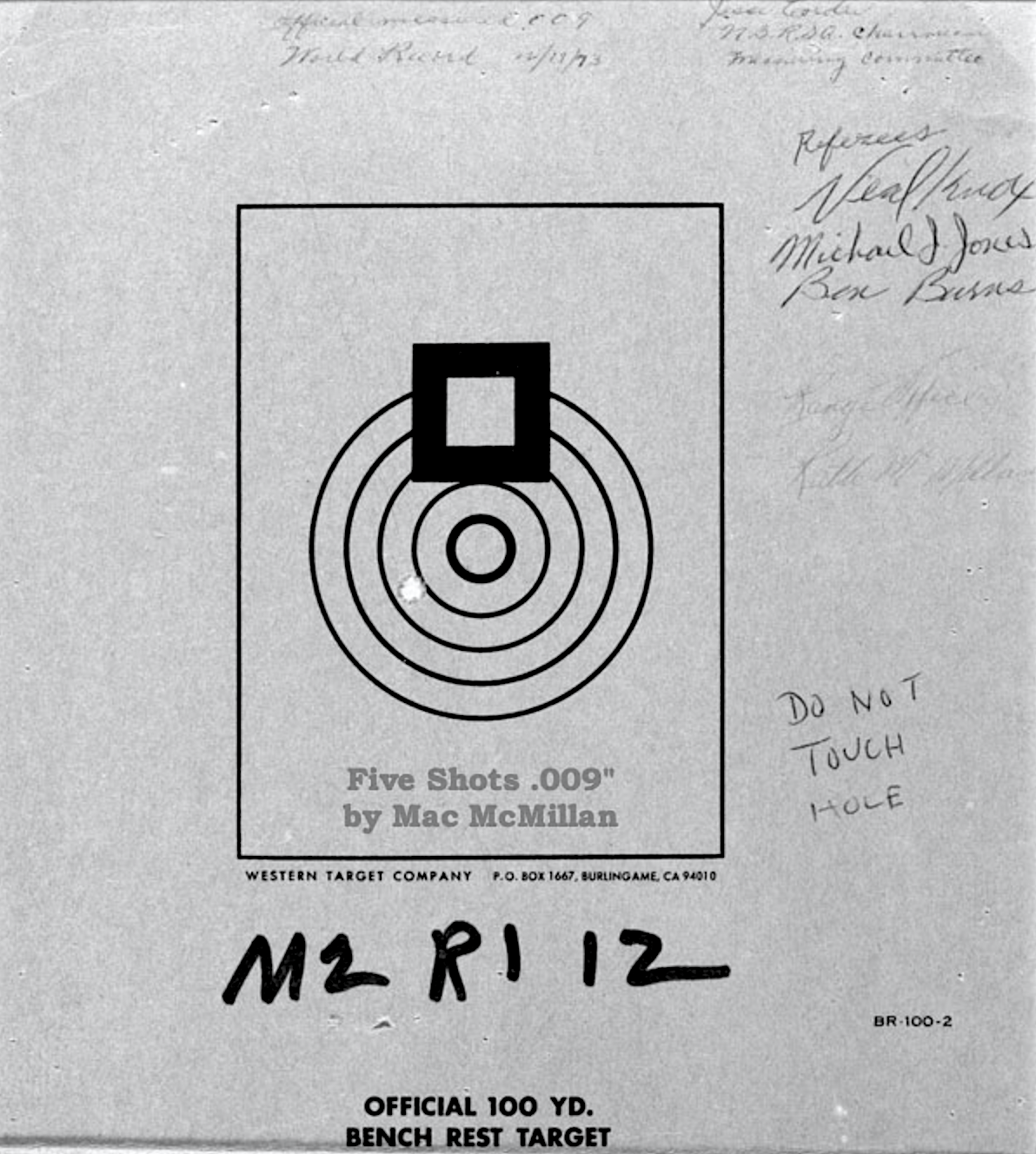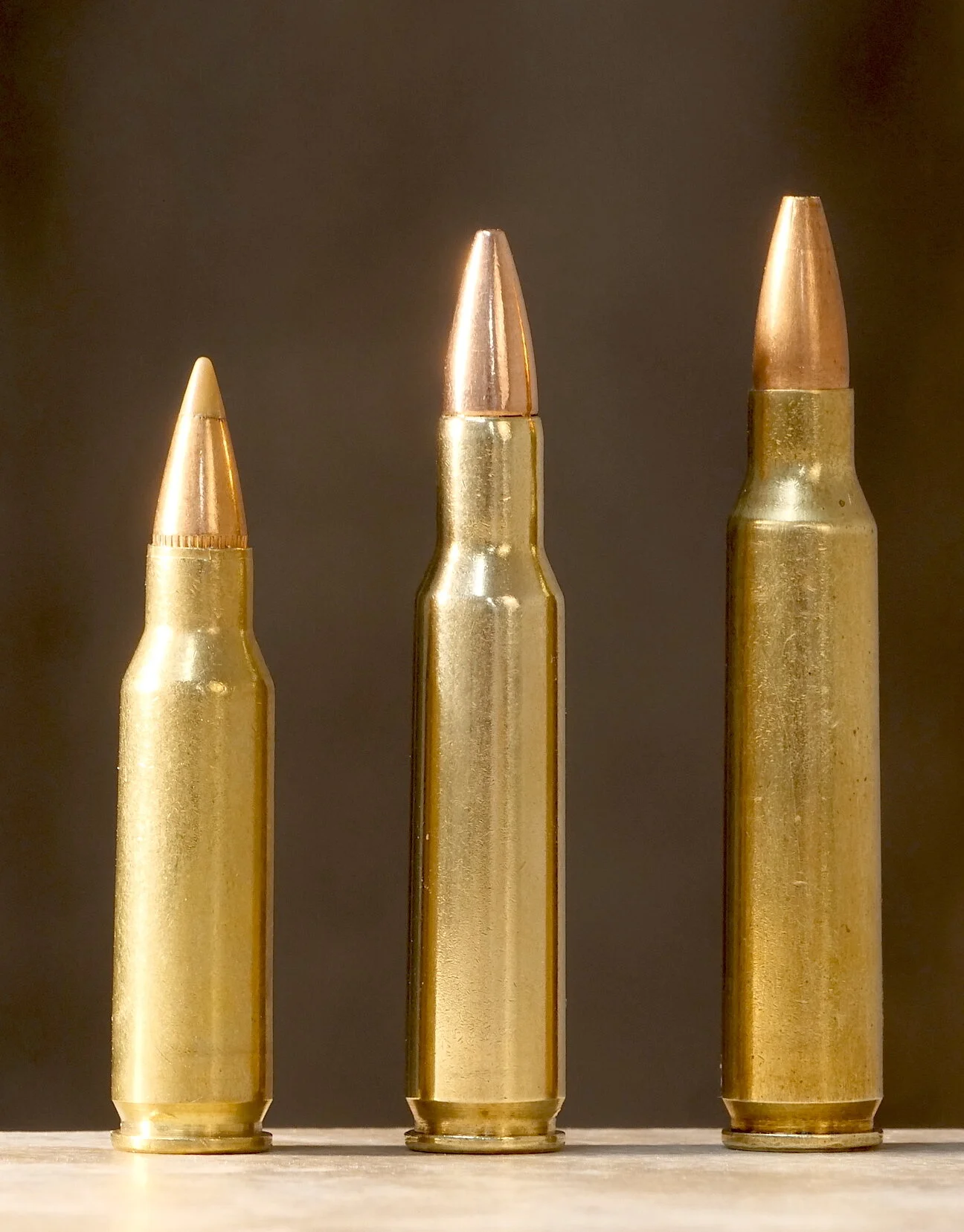How Did 222 Remington Generate a World Famous Family, Yet Die in the Process?
The 222 Remington times three for a triple Triple Deuce portrait.
There was once a cartridge called the 222 Remington. It was created in 1950 out of whole cloth (no parent cartridge) by Mike Walker of Remington. Mike’s baby went on to become the darling of the benchrest world, another Walker creation. The diminutive Triple Deuce, as many called it, set record after record until Mac McMillan poked a 100-yard, 5-shot, one-hole group that officially measured 0.009”, a world record that stood for 40 years.
Now that’s a one-hole group!
Yeah, but what has it done for us lately?
Well, for one thing the 222 inspired one of the most famous, popular, and successful centerfire rifle cartridges in the world. Plus the smallest bottlenecked 30-caliber in history. Not to mention our only commercial 20-caliber centerfire plus two of the smallest caliber centerfire cartridges ever, one of which could be the fastest commercial load ever sold to the public.
Not bad for an obsolete cartridge.
Yes, obsolete. Yesterday’s news. The 22-caliber “6.5 Creedmoor” of its day has run its course, pushed out by the very family it begat.
If you’re under the age of, say, 40, you may have never seen, let alone shot a 222 Remington. Which seems weird because this little cartridge was once ubiquitous and did more than punch small groups in paper. It was a mainstay in the varmint shooting fields. From prairie dogs and woodchucks to crows and coyotes, the 222 Remington was king. It drove a 50-grain bullet 3,240 fps, a 55-grain 3,200 fps and a little 40-grain 3,580 fps. Many hunters used it on deer and feral hogs. In the hands of subsistence hunters, it felled a surprising number of moose and caribou. And if that weren’t enough, you could get all this performance by burning just a thimbleful of BL-C2 powder.
Back in the day when prairie dogs were a threat to civilization, the 222 Remington was considered an effective limiting factor.
So it’s easy to see why the Triple Deuce became more popular than the 22 Hornet, which was 500 to 600 fps slower, and the 220 Swift, which was 600 to 700 fps faster. Who doesn’t appreciate a cartridge that’s inexpensive to shoot, gives long barrel life, is deadly accurate, generates almost no recoil, and has enough reach for sane shooting distances? Well, most of us, as it’s turned out.
Stuck in the middle with you. In the 1950s the 222 fell between the 22 Hornet and 220 Swift in size and performance.
Shop for a new rifle chambered 222 Remington these days and you might as well be looking for a 244 Remington or 225 Winchester. Virtually no manufacturer chambers for 222 Rem. anymore. What happened? The 223 Remington.
Like princes of yore who murdered their fathers to become King, the 223 Remington killed off the parent that had spawned it. But it didn’t act alone. Patricide runs rampant in the 222 Remington family.
The first nail in the coffin was driven by Remington’s own variation of the 222 Rem. They called it the 222 Remington Magnum and introduced it just eight years after the 222 itself. The cartridge is just a stretched version of the 222 designed to meet specs for a new military round. The army rejected it, so to recoup their R&D expenses, Remington unleashed it on the sporting public. The slightly longer case (.150”) and shorter neck provided enough additional powder space to boost 222 Rem. velocities by another 100 fps. Not enough for the Army. It went on to design and adopt the minimally different 5.56x45. Remington was prescient enough to grab this stretched version of their two two two to commercialize, too. (It isn’t everyday a writer gets to write that many twos and tos and toos!) They unleashed it in 1964 and called it the 223 Remington to provide a little breathing room among the family titles, even though it’s just the same 22-caliber shooting .224” bullets. Somehow — despite being a hair shorter than the 222 Rem. Mag., the 223 manages to pushes the same bullets to the same speeds. (SAAMI specs 55,000 psi for both, although the 222 is limited to 50,000 psi for some reason.) Figure 3,280 fps for each with a 55-grain bullet, according to Berger Bullets Reloading Manual, 1st Edition. Nosler’s Reloading Guide 9 gives the 223 another 40 fps or so, but doesn’t even cover the 222 Rem. Mag. It’s even deader than the 222.
Papa 222 and kids. The stubby 221 Fireball hatched the year before the 223 Rem. both have gone on to generate third generation variations on the 222 Rem.
What many shooters might not remember is that there was a 222 offspring hatched between the 222 RM and 223. It was the abbreviated 221 Fireball. Blessed with one of the cooler names in the family, the short Fireball went on to spawn second generations itself. First was the 17 Mach IV wildcat which Remington belatedly legitimized as the 17 Fireball in 2007. Now even more famous is the 300 Blackout. Yes, a .308 bullet atop the skinny, shortened 222 Remington case. It sounds ridiculous at first blush, but when you realize 7- to 10-grains of powder drive a 220-grain bullet 1,000 fps, you begin to understand. This is subsonic. Quiet. A military advantage now being used by feral hog exterminators at night.
At the other end of the velocity spectrum are a couple of 222 clan members nearing, if not setting, commercial cartridge speed records. In 1971 Remington manipulated its basic 222/223 platform brass to create the 17 Remington that will drive a 20-grain bullet 4,300 fps, equalling what a 220 Swift does with a 40-grain bullet. In 2004 Ruger and Hornady resurrected the 222 Rem. Mag. long enough to reshape it into the industry’s only commercially-loaded 20-caliber. They called it the 204 Ruger, and it broke the Mach 2 barrier with a 32-grain bullet going 4,158 fps, according to Nosler Reloading Guide 9.
Before we drag a bunch of wildcats into the mix, let’s sum up the commercial offspring of the 222 father/grandfather/great grandfather (and please let me know if I forgot any):
222 Remington 1950
222 Remington Magnum 1958
221 Fireball 1963
223 Remington 1964
17 Remington 1971
17 Fireball 2007
2004 Ruger 2004
300 Blackout 2011 (preceded by similar 300 Whisper)
Six of the eight-member extended 222 Remington family include 17 Fireball, 17 Remington, 204 Ruger, 221 Fireball, 222 Rem. and most famous of all, 223 Remington. Missing in action are 222 Remington magnum and 300 Blackout.
As for the wildcat branch of the family, it’s as broad and populated a polygamist family of the ancient world. There’s the 20 Tactical and 20 VarTag. From SSK Industries we get the 6mm Whisper, 6.5 Whisper, 7mm Whisper, 300 Whisper and even 338 Whisper. For its handguns Thompson/Center necks up the 223 Rem. and changes body taper and shoulder angle to give us the 6mm TCU, 25 TCU, 6.5 mm TCU, 7mm TCU and 30 TCU.
Shuffle through reamers are gunsmith shops across North America and you’re liable to find many more wild variants of the 222 Remington theme, the wildest of which must be the 14-222 Rem. Yes, a 14-caliber. I hunted jackrabbits with one once. But crazy as that sounds, there were reportedly even some 12-caliber versions. Can’t be fun trying to handload those.
A cartridge case as well designed as the 222 Remington might get swept into the dustbin of history, but not before it spawns a long, strong legacy. How many of the family do you shoot?










